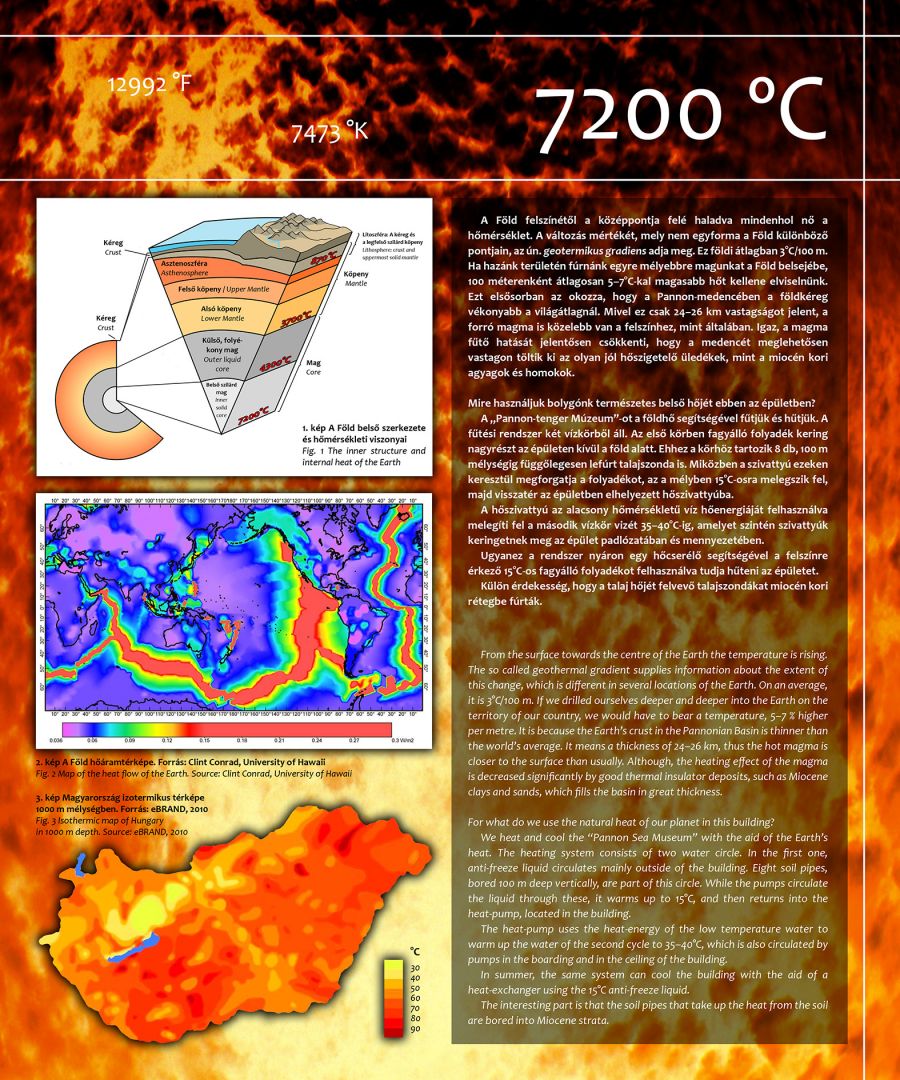GEOHISTORICAL GALERY - 2. view
7200 °C
From the surface towards the centre of the Earth the temperature is rising. The so called geothermal gradient supplies information about the extent of this change, which is different in several locations of the Earth. On an average, it is 3°C/100 m. If we drilled ourselves deeper and deeper into the Earth on the territory of our country, we would have to bear a temperature, 5–7 % higher per metre. It is because the Earth’s crust in the Pannonian Basin is thinner than the world’s average. It means a thickness of 24–26 km, thus the hot magma is closer to the surface than usually. Although, the heating effect of the magma is decreased significantly by good thermal insulator deposits, such as Miocene clays and sands, which fills the basin in great thickness.
For what do we use the natural heat of our planet in this building?
We heat and cool the “Pannon Sea Museum” with the aid of the Earth’s heat. The heating system consists of two water circle. In the first one, anti-freeze liquid circulates mainly outside of the building. Eight soil pipes, bored 100 m deep vertically, are part of this circle. While the pumps circulate the liquid through these, it warms up to 15°C, and then returns into the heat-pump, located in the building.
The heat-pump uses the heat-energy of the low temperature water to warm up the water of the second cycle to 35–40°C, which is also circulated by pumps in the boarding and in the ceiling of the building.
In summer, the same system can cool the building with the aid of a heat-exchanger using the 15°C anti-freeze liquid.
The interesting part is that the soil pipes that take up the heat from the soil are bored into Miocene strata.
Fig. 1 The inner structure and internal heat of the Earth
Fig. 2 Map of the heat flow of the Earth. Source: Clint Conrad, University of Hawaii
Fig. 3 Isothermic map of Hungary in 1000 m depth. Source: eBRAND, 2010
